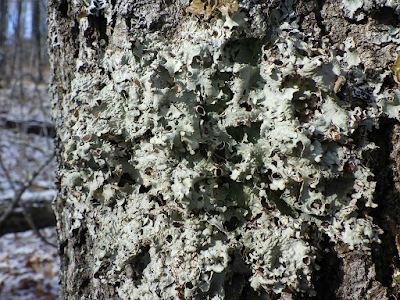Lichens and Adventure at Split Rock Beach
Noah organized a trip to Split Rock to do some hiking and end with a dip in Lake Superior, a bunch of us naturalists joined him. Walking along the rocky shoreline of the big lake is always a great time, especially when it ends with a quick jump in the cold waters. Today I was a little more focused in on the geology, as Emma and Paul were pointing out some cool features along the way. Of course we all got distracted by the abundance and diversity of lichens. We also spent quite a bit of time looking for agates, there were a lot of them on the beach today. Originally the plan was to do some skiing, but there was essentially no snow, except in a few shaded spots.
The shoreline is such a unique environment, its plant community is classified as Lake Superior Rocky Shore LKu43. This landscape is dominated by lichens and mosses, usually the plants that grow here are dwarfed by the extreme growing conditions. Right up next to the shoreline, these rocky cliffs are also influenced by the cooling effect of Lake Superior to a much greater degree than areas even slightly inland. These extreme conditions have selected for a unique group of organisms that have evolved ways of coping with high levels of disturbance, low nutrients, and extreme temperature swings. Many of these species are quite rare and found essentially nowhere else in the state. A lot of these interesting plants, mosses, and lichens are artcic/alpine disjuncts.
My favorite find of the day was the lichen Punctelia stictica, a state endangered species that is only found a few places on the shoreline. I've never seen a common name, but I like to call it speckled moonshine lichen. This species is quite distinct thanks to its pseudicyphellae, those white specks which are pores that facilitate gas exchange. This is the fourth location where I have seen this species. I found the lichen in a few spots on the hike; one boulder was absolutely covered in this lichen for some reason. It must be providing ideal conditions as these were by far the largest individuals of this species I have ever seen.
Another amazing find was Pisutiella grimmiae which is a lichenicolous lichen. This was the second spot on the shore that I've seen this species, but in both places it is quite abudant. Based on this, and the fact that the host lichen is extremely common, I'd guess it has a wide distribution in the state. Pisutiella grimmiae acts as a parasite on common goldspeck lichen (Candelariella vitellina). It is always a treat to see the distinct contrast between this orange lichen and its bright yellow host. In yesterday's post I was talking about all the interesting symbioses I was seeing on maple trees. There were quite a few examples on this shoreline as well; these two lichen species, plenty of Diplolepis galls on roses, and a few Aulacidea hieracii galls on hawkweeds.





Comments
Post a Comment